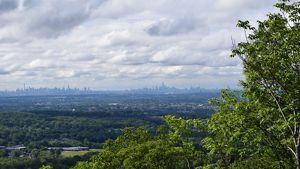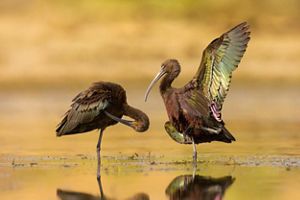Top 10 Adventures
From mountain biking and birding to hiking and painting, our preserves offer something for everyone.
Nature heals. Nature calms. Nature is…our everything. Connecting to and exploring in nature is as important as protecting nature. Here are 10 ways to connect with nature at our preserves across New Jersey.
High Mountain Park Preserve


1. Take a Selfie at the Summit
Elevate your exercise, literally, by hiking to the High Mountain Summit. Traverse about 1.5 miles through High Mountain Park Preserve of varied terrain, including a rigorous climb at the end to the summit. Once at the top, you’ll be standing 800 feet above sea-level with sweeping vistas of the Manhattan skyline and northern New Jersey. Snap a selfie and share it on social media; the NYC skyline makes the perfect selfie backdrop!

2. Walk to Waterfalls
Johnsonburg Swamp Preserve

3. Look for Lime Kilns

Stay connected for the latest news from nature.
Get global conservation stories, news and local opportunities near you. Check out a sample Nature News email.
Maurice River Bluffs Preserve
4. Mountain Bike Along the Maurice River
Pedal your way through an exhilarating six-mile mountain bike trail in an enchanting natural setting. The mountain bike trail on the preserve is one of the few trails in southern New Jersey that offers elevation change. Designed following International Mountain Biking Association standards, the trail is perfect for both beginning and experienced riders. Keep an eye out for local wildlife: you might cross paths with white-tailed deer, migratory birds, or even red fox!
5. Hike Alongside Historic Ruins
The Maurice River Bluffs preserve was once a hub for sand mining and the Maurice River was crucial to the transport of these materials with several piers located along its banks. The six miles of hiking trails bring you alongside some of the historic ruins from this preserve’s fascinating history, including an 18th century farmhouse.
Garrett Family Preserve at Cape Island Creek

6. Become a Butterfly
Celebrate nature and be a part of our colorful kaleidoscope (that’s what a group of butterflies is called!) by taking a photo with our Dream Machine Monarch, crafted by sculpter Rubem Robeirb. Please visit the preserve, take a photo with the statue and share it using #TNCMonarch to help us spread information about this beloved species and the importance of conserving their habitat




7. Marvel at Murals
Before entering or exiting the Garrett Family Preserve, stop to appreciate the three monarch caterpillar murals located next to the parking lot. The paintings, created by Alex LeBron in 2024, celebrate the preserve's art connection, bringing new life to three abandoned train cars. Like monarch butterflies themselves, the train cars have transformed into something beautiful for visitors to enjoy.

8. Paint the Preserve
South Cape May Meadows



9. Be a Birder
A globally-renowned paradise for birders, the South Cape May Meadows Preserve is a haven for native and migrating birds. Given its unique location along the Atlantic Flyway, over 340 species have been recorded here, making it an experienced birders’ playground! Observation platforms, viewfinders and an 80 foot floating bird blind allow visitors to get up-close and personal with nature. The trail system lets birders explore many different habitats like freshwater wetlands, deciduous forests, and one mile of protected, undeveloped beach that offers unobstructed views of the Cape May lighthouse.
10. Walk Through Wildflowers
Seasonally, both our South Cape May Meadows and Garrett Family Preserve at Cape Island Creek offer the exciting opportunity for visitors to stroll through beautiful wildflowers.










Pollinator Hotel: Native pollinators thrive when the goldenrod blooms from late August to October. © Lily Mullock/TNC
Walking through wildflowers is nothing short of magic. If you’re visiting New Jersey during July and August, stroll through Boardwalk Trail at our South Cape May Meadows Preserve to be surrounded by hundreds of swamp rose mallow blooms. During late August into early October, the meadows at our Garrett Family Preserve boast thousands of goldenrod flowers. The pollinator trail brings you through the heart of the wildflower meadows, making for an excellent photo opportunity!
Support Our Work
Help us protect the beautiful lands and waters of New Jersey so that generations to come of people and wildlife can enjoy them and benefit from the clean water, air and habitats.




